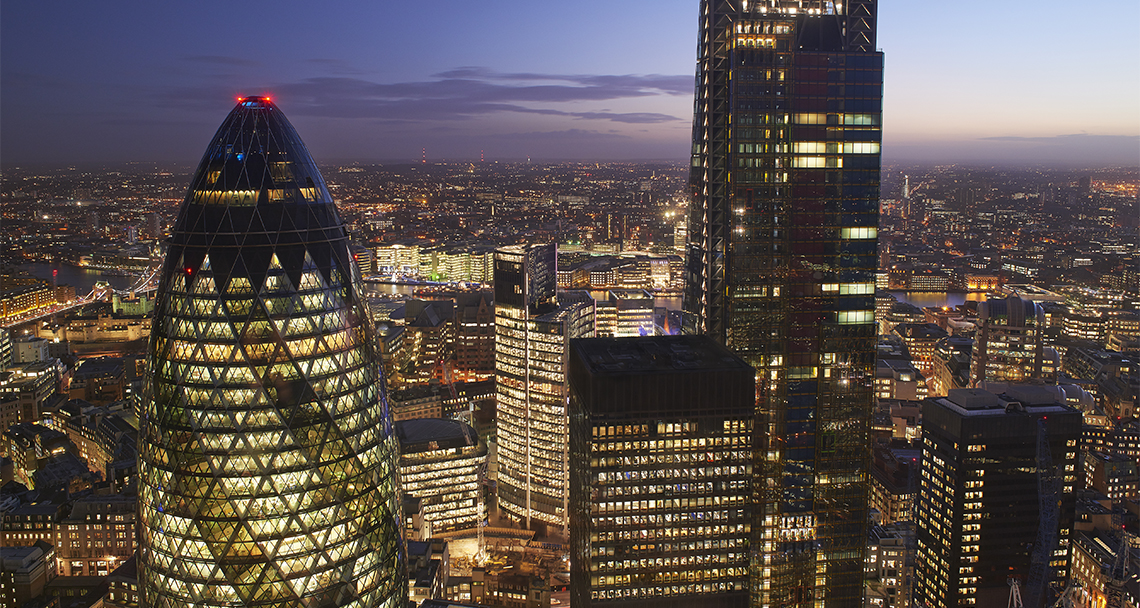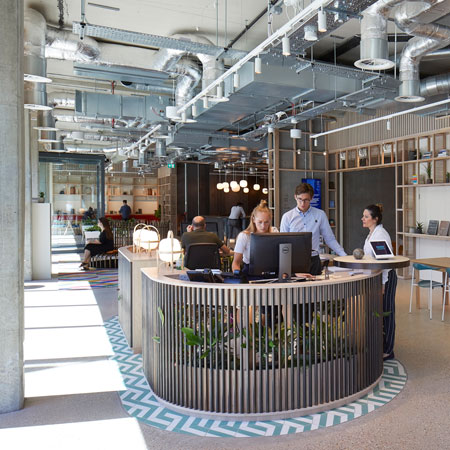Since the start of the pandemic, one of the biggest questions in real estate has been around office occupation. We asked our Savills colleagues in 10 key world cities to sum up the office market sentiment in their local market from an occupier point of view.
From the answers, there are three takeaways that help summarise the markets at the moment:
- In almost every city, incentives are very likely to increase over the next six months. Shanghai is the only exception where incentives are expected to remain the same, having already significantly increased in recent quarters.
- The proportion of landlords willing to offer more flexible lease terms varies. In Dubai, London and San Francisco, more than 80% of landlords are willing to, compared with less than 40% in Berlin, Paris and Shanghai.
- Looking forward, seven out of 10 cities expect more landlords to offer flexible lease terms. Only Berlin, Hong Kong and Shanghai expect the proportion of landlords offering these terms to stay the same.
To find out more about individual cities and what advice our Savills colleagues would give a 30,000 sq ft central business district (CBD) occupier with a lease event in 12 months’ time, select a city or read below.
Europe and the Middle East
Berlin, London, Paris, Dubai
Asia-Pacific
Hong Kong, Mumbai, Shanghai, Singapore
USA
New York, San Francisco
Berlin
Overview
While differing from 0% to 100% in individual cases, we estimate that offices are 40-50% occupied on average. Larger companies tend to have the majority of their workforce still working from home, while SMEs have mainly returned to their offices.
Employees in the public sector also returned to their desks in most cases because only a minority of institutions have the technical equipment they need to work remotely.
We expect occupancy rates to sharply increase within the next 12 months. However, at least some companies are likely to reduce their office footprint which will lead to sublettings and disposals. Consequently, we expect the vacancy rate to increase slightly which might put rents under pressure for a while.
Many landlords are willing to offer their tenants shorter lease terms and the option to flexibly dispose of space or to expand when needed. Some developments, particularly speculative ones, have been postponed.
What advice would you give a 30,000 sq ft CBD occupier with a lease event in 12 months’ time?
We would advise any occupier to thoroughly prepare for different scenarios. Generally, landlords are keen to keep their existing tenants given the current circumstances, so for an occupier with a lease event in 12 months’ time who is happy with their current office it makes sense to talk to their landlord while reviewing alternative options.
Contact Matthias Pink, Associate, Research, Savills Immobilien Beratungs-GmbH (mpink@savills.de)
Dubai
Overview
The majority of companies in Dubai have asked their employees to resume working from the office in some capacity. However, there are a few multinationals that are allowing employees to work from home, which appears to be part of a global policy initiative rather than locally driven.
Many companies from the banking and financial services, consulting and advisory services and tech sectors are either following a flexi working arrangement or have chosen to work from home until the end of the year.
Most companies are looking to achieve savings in their real estate, and while they are still looking at relocation, gaining internal approvals for significant CapEx to fund fit-out is challenging. Landlords looking to attract new tenants are having to consider delivering space in higher than traditional shell and core condition or offering cash incentives to fund fit-out. “Tenant installation” benefits, i.e. a landlord cash contribution to fit-out, are common in many global markets but never in this region before. This looks likely to change.
Rental values in the city were already under pressure pre-Covid-19 due to an oversupply of Grade B developments. We anticipate this rental decline to continue through to 2021 as a result of this imbalance. However, we have not yet reported any major lease surrenders or reductions in space requirements from clients as of Q3 2020.
On the contrary, a few large deals that were in the pipeline pre-Covid-19 have finally been signed. Also, enquiry levels from new companies to enter the market have remained stable with an increase in enquiries from companies in the life sciences and tech sector.
What advice would you give a 30,000 sq ft CBD occupier with a lease event in 12 months’ time?
Immediately start running a stay versus go project to explore alternative options in the market while leveraging this in parallel for discussions on a re-gear/renewal with the current landlord. We have been successful in agreeing early re-gears for many clients over the past six months, which benefits the client in terms of early savings on a lease expiry and locks in commitment for the landlord.
Contact Swapnil Pillai, Associate Director, Research & Consultancy, Savills Middle East (swapnil.pillai@savills.me)
Hong Kong
Overview
The city’s Grade A office vacancy rate rose to 6.8% at the end of September 2020, from 4.7% at the end of 2019. The surging vacancy rate during the period was attributed mainly to worldwide economic recession, which has inevitably resulted in corporate downsizing and the surrender of office space.
Decentralisation continues to prevail with more Central-based financial and business services firms moving to other districts (e.g. Wan Chai/Causeway and One Island East). Most businesses have resumed normal working patterns but some multinationals are still allowing staff to work from home.
Retail and hospitality have been greatly impacted by the pandemic, together with finance and business services. This is reflected in the rising vacancy rate in the CBD.
Medical and online businesses are examples of sectors that have been relatively less affected. In order to attract tenants, landlords are currently offering longer rent-free periods as an incentive, rather than shortening the lease term to less than the typical term of three years.
Developers and investors are more cautious when considering land acquisitions, and the Development Bureau recently delayed the tender of New Central Harbourfront Commercial Site 3.
We expect rents to fall by a further 7.5-10% in a year’s time, after rents have fallen by 11.9% over the first three quarters of 2020. The vacancy rate is expected to continue rising given sluggish leasing activity and 1.4 million sq ft of new supply due to complete in 2021.
What advice would you give a 30,000 sq ft CBD occupier with a lease event in 12 months’ time?
The occupier should start the planning process (e.g. solicit and consider options) now since many 30,000 sq ft CBD occupiers start their search for available options one year before expiry. Typically, it requires six to nine months for the entire renewal/relocation decision.
Contact Simon Smith, Senior Director, Head of Research, Research & Consultancy, Savills Asia Pacific (ssmith@savills.com.hk)

London
Overview
The central London office market is currently firmly in “wait and see” mode, as occupiers and investors try and calibrate their thinking around the two unprecedented events that are Covid-19 and Brexit.
On the occupational side of the market, leasing activity has remained muted, and fell to its lowest ever monthly level in August 2020. While September saw a slight recovery to just over 200,000 sq ft leased, this remains substantially down on the long-term average of 900,000 sq ft.
Generally, the market is responding in a typical recessionary fashion, with low levels of take-up, rising vacancies due to subletting, and development starts being delayed. There is no evidence of any falls in prime headline rents to date, though there is downward pressure on net-effective rents.
Looking ahead, we expect that pre-letting activity will remain robust as the level of requirements in the London office market has risen during lockdown. This will combine with fewer development completions to maintain or even put upward pressure on rents from 2021.
Investor demand for core London office product has strengthened since the summer lull, and we are seeing robust competition between risk-averse domestic and international buyers for core assets. We expect that current prime yield levels will be sustained through the winter and spring, and could come under some downward pressure in 2021.
What advice would you give a 30,000 sq ft CBD occupier with a lease event in 12 months’ time?
Start looking for space now, as high-quality and well-located assets will remain scarce. Furthermore, landlords will be keen to offer attractive terms.
Contact Mat Oakley, Head of European Commercial Research, Savills UK (moakley@savills.com)
Mumbai
Overview
Covid-19 has led to multiple resets in Mumbai’s office markets. After three financial quarters of living with the pandemic, office occupancy remains low at about 10%, as work from home continues in many businesses.
While e-commerce and essential services are progressively returning to work in offices, the other end of the spectrum – the technology sector – has adopted working from home even more purposefully than before.
Most landlords have remained flexible in these times. Although headline rents remain unchanged, the adjustments are increasingly evident through mechanisms like higher rent-free periods, flexibility in escalations, parking charges or even property-tax payments.
Some landlords have shown keenness to modify property services, such as air-conditioning systems, to allow more fresh air. Largely though, building specifications have not undergone changes.
The key question is about the trajectory of rents, which have remained stable, but barely so. Strong negotiations, coupled with occupier strategies like hub-and-spokes between CBD and suburbs, are adding to the pressures. An apt example is that of a global consulting firm looking to re-stack its real estate portfolio, thereby optimising its footprint in the current situation.
If faced with further unforeseen events, or a delay in economic recovery, rents could experience a 5%-10% decline.
What advice would you give a 30,000 sq ft CBD occupier with a lease event in 12 months’ time?
Start discussions without delay. This is perhaps the best time to negotiate rents, rent-free periods, parking charges or building services. Search within the same market to begin with, but also check alternative markets. The terms are expected to be very competitive in suburban markets at this time.
Landlords are keen to negotiate and accommodate reasonable demands in order to retain a large tenant. The primary strategy should be to get a better deal in the same premises, instead of relocating.
Contact Arvind Nandan, Managing Director, Research & Consulting, Savills India (arvind.nandan@savills.in)
New York
Overview
Prior to the development of a vaccine or treatment, the Manhattan office market is facing significant dislocation caused by ongoing business and economic fallout from Covid-19.
With more than 16.1 million sq ft of sublease space currently available, market availability increased to 13.3% in the third quarter – its highest since the Great Recession.
Leasing demand has been tepid at best and remains down 45% compared with last year. Still, a handful of large leases – notably from the tech sector – revived volume somewhat in Q3. Facebook signed a new 730,000 sq ft lease at Vornado’s Farley redevelopment in August, securing its space there at about a 9% discount given current circumstances.
Some tenants began to repopulate offices in July (+/- 10%), yet for many businesses the current work-from-anywhere (WFA) timeline remains indefinite. The trend towards flexibility is accelerating as occupiers reduced their lease term commitment by 5-10% from pre-pandemic levels in order to evaluate overall demand for space due to permanent layoffs and longer-term shifts to part-time WFA.
Owners have been increasingly flexible in terms and generous in concession offerings to secure tenants in this uncertain environment. Speculative construction is likely to be limited in the face of a softening market. Still, trophy assets will benefit from a flight-to-quality as organisations transition the use of office space from “performing work” to centralised collaborative meeting places for culture and innovation.
Availability is likely to remain elevated into 2021 and rents are expected to see further declines before bottoming out. The timing and depth of the bottom in Manhattan ultimately depends on macro-economic conditions, the recovery of office-using employment, and long-term policies on agile/WFA policies.
What advice would you give a 30,000 sq ft CBD occupier with a lease event in 12 months’ time?
Consider a short-term extension of lease at a substantially discounted rent. Explore the market now, observe market changes and spend time evaluating future WFA policies. When it is time to strike, prioritise future lease flexibility (including expansion, contraction and termination rights) as much as, if not more than, price.
Contact Sarah Dreyer, Vice President, Head of Americas Research, Research Operations, Savills US (sdreyer@savills.us)
Paris
Overview
French employees, as everywhere in continental Europe, were overwhelmingly back in the office following the first lockdown in May. Thus, at the end of the summer, only 15% of employees were still working from home (22% in Paris).
The new lockdown since 30 October has obviously reversed this trend, causing the share of people working from home to soar. Between the two lockdowns, the largest companies in France have had a more open strategy to maintain a significant share of work from home for their employees. This was the case in particular for certain banking companies but also for large industrial companies such as EDF or PSA.
The need for flexibility does not pass through to leases, where legal structures do not allow many adjustments. On the other hand, it is clear that landlords are attentive to the constraints and needs of their tenants and their priority is to keep them as users. Renegotiations are therefore much more common as lease expiries approach.
It is clear that supply will be on the rise, with the release of space, rarer pre-letting and, also, the increasing search for sub-tenants.
The consequence on prices is obvious: the rise in rents will come to a halt. However, the phenomenon will not be homogeneous in the Paris region: in Paris’s inner-city, prime rents will stabilise and adjustments will be made primarily through rent-free periods and support measures. Outside the city centre, downward adjustments in headline rents will be much more visible, particularly in markets such as La Défense.
What advice would you give a 30,000 sq ft CBD occupier with a lease event in 12 months’ time?
The priority is to know precisely what the needs are and to determine the necessary space areas according to the work organisation envisaged by the occupier over the next few years. Once this analysis is done, the occupier can begin negotiations on their current real estate location.
At the same time, it would be a shame for the tenants not to take advantage of the opportunities offered by the Parisian market by initiating negotiations on an alternative real estate solution.
Contact Cyril Robert, Director, Research Department, Savills France (cyril.robert@savills.fr)

San Francisco
Overview
San Francisco is among the hardest-hit office markets in the US in terms of impact of the ongoing Covid-19 situation. Pre-pandemic, it was one of the tightest office markets in the country with no signs of slowing. However, it is now facing massive disruption as business activity remains incredibly limited and office market fundamentals are softening quickly.
Leasing activity plummeted to just over 300,000 sq ft in the third quarter – a fraction of the 2.6 million sq ft recorded in Q3 2019. Additionally, sublease supply has exploded and 7.5 million sq ft of such space is currently available, more than doubling since the end of February as occupiers re-evaluate their space needs and seek to reduce costs.
Most of the city’s office workers remain working from home. With such a rapid and drastic shift in market fundamentals, landlords are likely to be incredibly flexible when trying to retain or attract tenants and will offer increasingly generous concessions.
The development pipeline was limited prior to the pandemic and any speculative construction is not likely to occur in the foreseeable future. Tenants will, however, benefit from an increase in options and once scarce large-block opportunities will become more readily available. Given the amount of space that has come back to the market over the past two quarters, availability is likely to remain elevated well into 2021 and rents should see significant downward repricing.
What advice would you give a 30,000 sq ft CBD occupier with a lease event in 12 months’ time?
Try to secure a 12-month or short-term lease extension if possible. Alternatively, let the lease expire and vacate if WFA has been and continues to be viable and productive. Study the market and evaluate market pricing/availability to make a decision on the other side of the vaccine or therapeutic event.
Contact Sarah Dreyer, Vice President, Head of Americas Research, Research Operations, Savills US (sdreyer@savills.us)
Shanghai
Overview
Most companies are 100% back to work by now and many of them have been since local transmission of Covid-19 has been largely eliminated aside from small localised clusters in May. There may have been some variation in work resumption based upon ownership, management or industry initially, but all firms should be back by now.
Landlords are looking to increase value offering to tenants in all sorts of ways. Leases are already relatively short, so it is hard to shorten leases further, but there may be flexibility in the lease conditions including first right of refusals.
Some landlords may also provide temporary workstations to tenants for overflow space and they are also upgrading property management offering and investing in PropTech solutions, for example touchless lifts and facial recognition security gates.
Most developments are speculative ventures. Some projects have been delayed due to construction delays, financing, or market conditions, and pre-leasing periods have been extended to 12-15 months. Both occupancy and rental rates are likely to be lower in 12 months’ time, though this is as a result of supply pipeline versus any particular weakness in demand.
What advice would you give a 30,000 sq ft CBD occupier with a lease event in 12 months’ time?
Start talking to new developers now, as they are desperate to sign up new leases and fill up developments. Also, explore any subsidies/incentives from district governments and leverage decentralised office offers to get the best deal on city centre projects.
Contact James Macdonald, Senior Director, Head of China Research, Research, Savills China (james.macdonald@savills.com.cn)
Singapore
Overview
Grade A CBD offices saw occupancy levels decline from 94.3% in Q2/2020 to 93% in Q3/2020 due in part to tenants giving up shadow space upon lease renewals or pre-termination arising out of business closures.
Although 50% of a company’s workforce may now return to the office, in most sectors that occupy space in the CBD many offices have just 30% of their headcount back. Those who have to return have been broken up to work from alternate locations, leading to an increasing demand for regional office space, which unfortunately is of limited supply.
Tenants are still uncertain of their headcount requirements for 2021 and 2022 and with the northern hemisphere entering a winter lockdown, many are deferring their corporate real estate plans until spring.
For those whose leases are due to expire soon, they would renew on a short-term basis of one to two years instead of the typical three to five years. Landlords have become more accommodating in recent weeks and are agreeing to short-term lease renewals.
Owing to construction stopping for six months, new supply has been delayed, helping to shore up near-term rents. We believe there will be further completion timeline hiccups as construction workers, many of whom are from abroad, have expressed the wish to return to their home countries.
The landscape of CBD Grade A offices moving forward will be one where rents may settle at a new baseline, likely to be lower, and we may see a higher normal vacancy rate in buildings. At this juncture, the market is still mired in uncertainties, although we detect some light at the end of the tunnel next spring. However, we suspect the colour and intensity of light has changed.
What advice would you give a 30,000 sq ft CBD occupier with a lease event in 12 months’ time?
Wait until March next year when the market is expected to face greater consolidative pressures and then return to the landlord to ask for better terms. Rents in Singapore have yet to show significant declines. At the moment, landlords have been slow to adjust rents down and if one rushes to lock in the renewal rents with 12 months to go, it would be difficult to justify to head office why the discount is small when rents elsewhere have fallen sharply.
Contact Alan Cheong, Executive Director, Research & Consultancy, Savills Singapore (alan.cheong@savills.com.sg)




